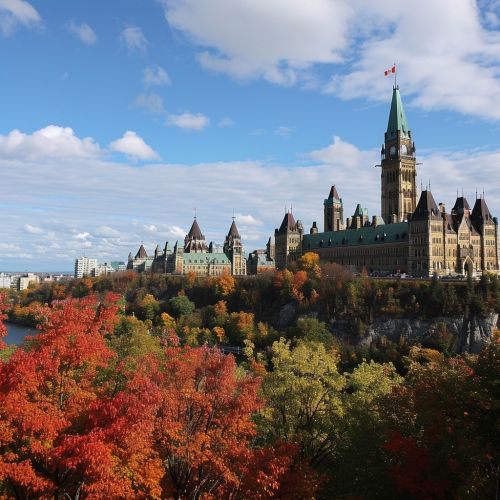Government of Canada
Structure of the Government of Canada
The Government of Canada is a federal system of government, meaning that power is divided between a central government and individual provinces and territories. The structure of the government is defined by the Constitution Act, 1867, which outlines the distribution of powers and responsibilities among the various branches of government.


Executive Branch
The executive branch of the Canadian government is headed by the Monarch of Canada, who is represented in Canada by the Governor General. The Monarch's role is largely ceremonial, with most executive powers exercised by the Prime Minister of Canada, who is the head of government. The Prime Minister is the leader of the political party that has the most seats in the House of Commons, the lower house of the Parliament of Canada.
Legislative Branch
The legislative branch of the Canadian government is bicameral, consisting of the House of Commons and the Senate of Canada. Members of the House of Commons, known as Members of Parliament (MPs), are elected by the public in their respective constituencies. Senators, on the other hand, are appointed by the Governor General on the advice of the Prime Minister. The role of the legislative branch is to make laws, scrutinize the government's activities, and represent the interests of the public.
Judicial Branch
The judicial branch of the Canadian government is responsible for interpreting and applying the law. The highest court in Canada is the Supreme Court of Canada, which hears appeals from lower courts and has the final say on all legal matters. The judicial branch also includes other federal and provincial courts, each with its own jurisdiction and responsibilities.
Federal-Provincial Relations
The relationship between the federal government and the provinces and territories is an important aspect of Canada's political system. The Constitution Act, 1867, divides legislative powers between the federal government and the provinces. Some areas of jurisdiction, such as defense and foreign affairs, are exclusive to the federal government, while others, such as education and healthcare, are primarily the responsibility of the provinces. There are also areas of shared jurisdiction, such as agriculture and immigration.
Political Parties and Elections
Canada has a multi-party system, with the Liberal Party of Canada and the Conservative Party of Canada being the two major political parties. Other significant parties include the New Democratic Party, the Bloc Québécois, and the Green Party of Canada. Federal elections are held at least every four years, with the party winning the most seats in the House of Commons forming the government.
Public Service
The public service of Canada is the country's largest employer, with over 250,000 employees. It supports the government in the development and implementation of its policies and programs. The public service is organized into departments and agencies, each headed by a minister who is a member of the Cabinet.
